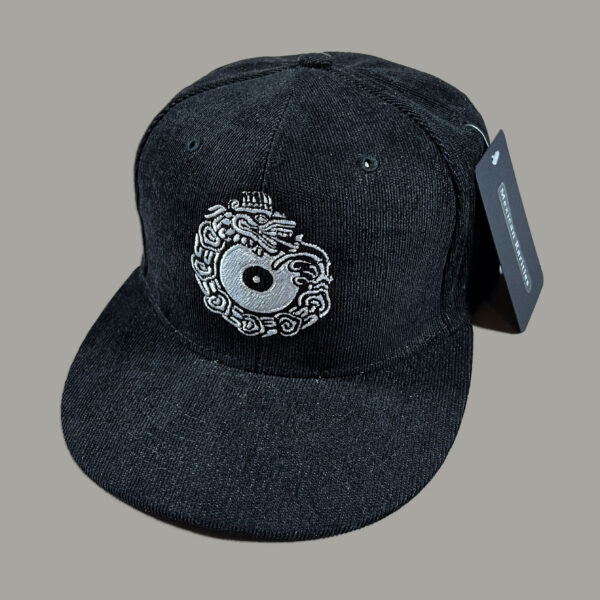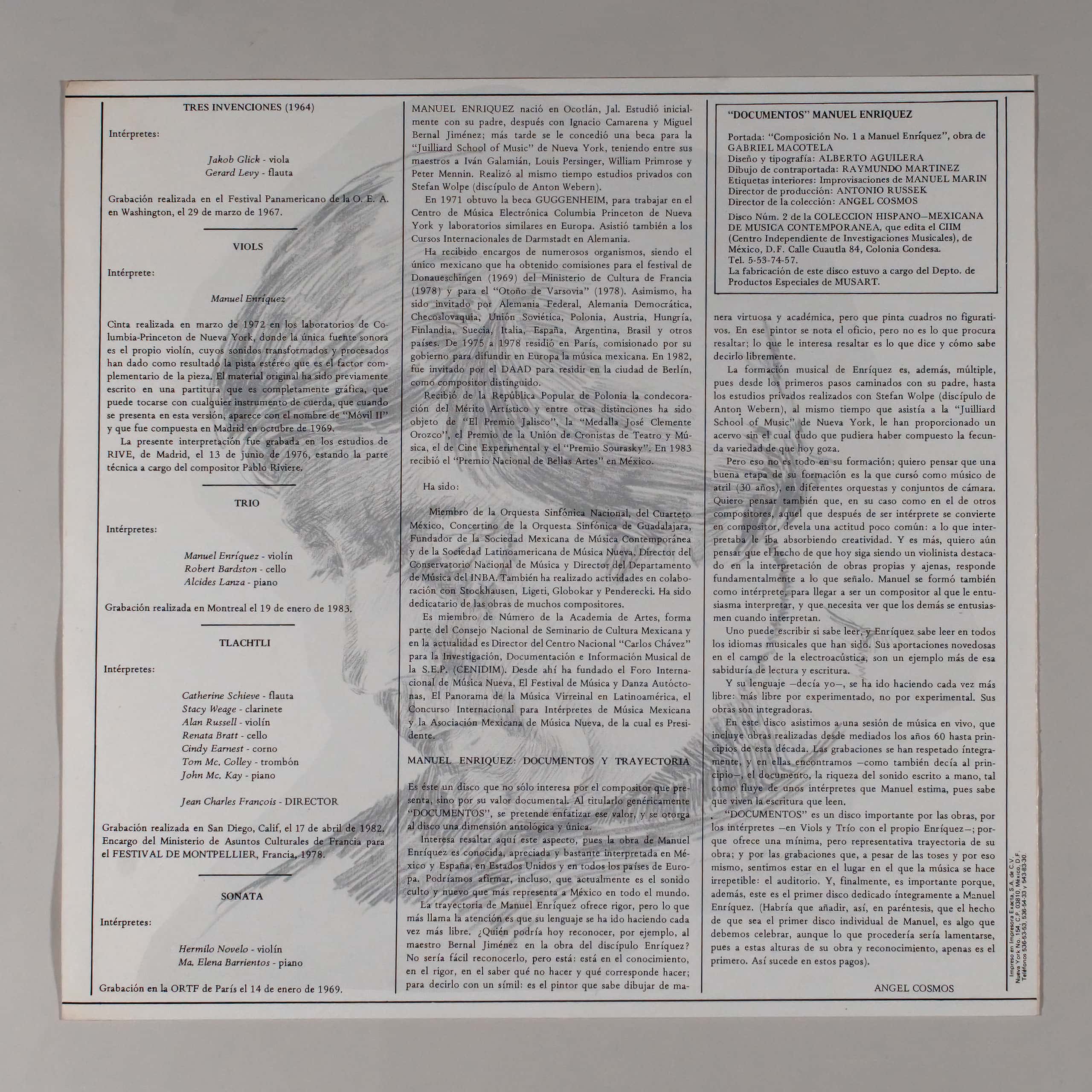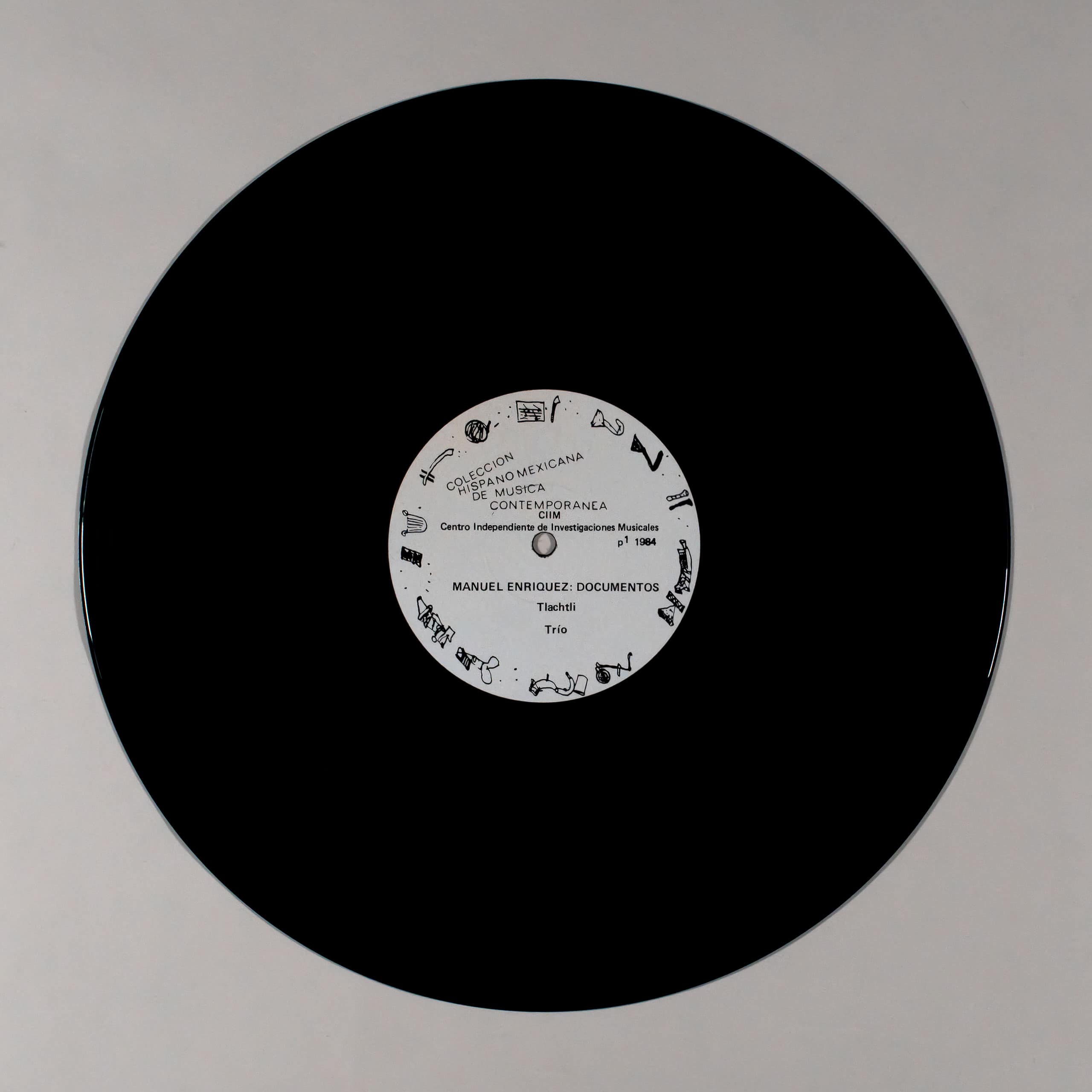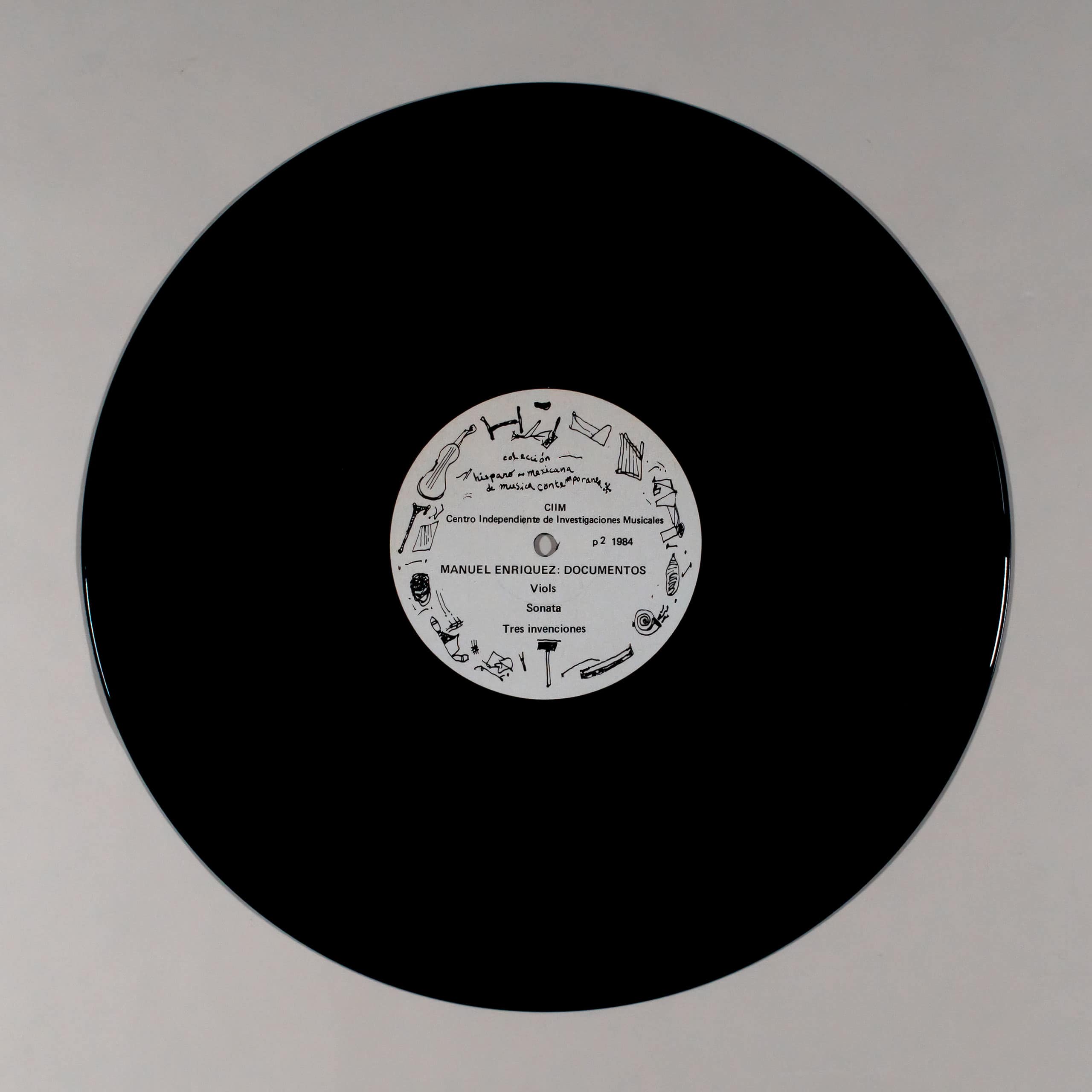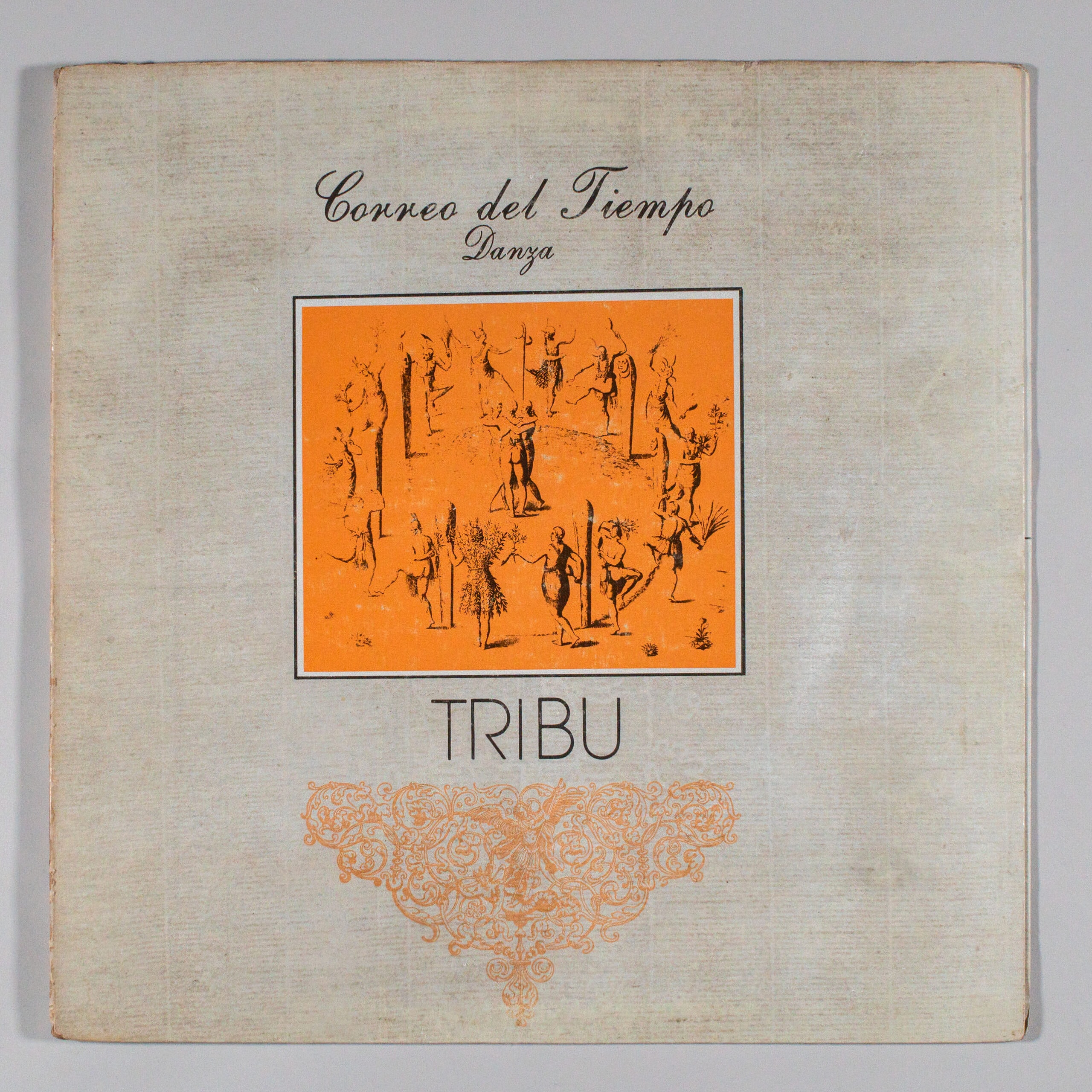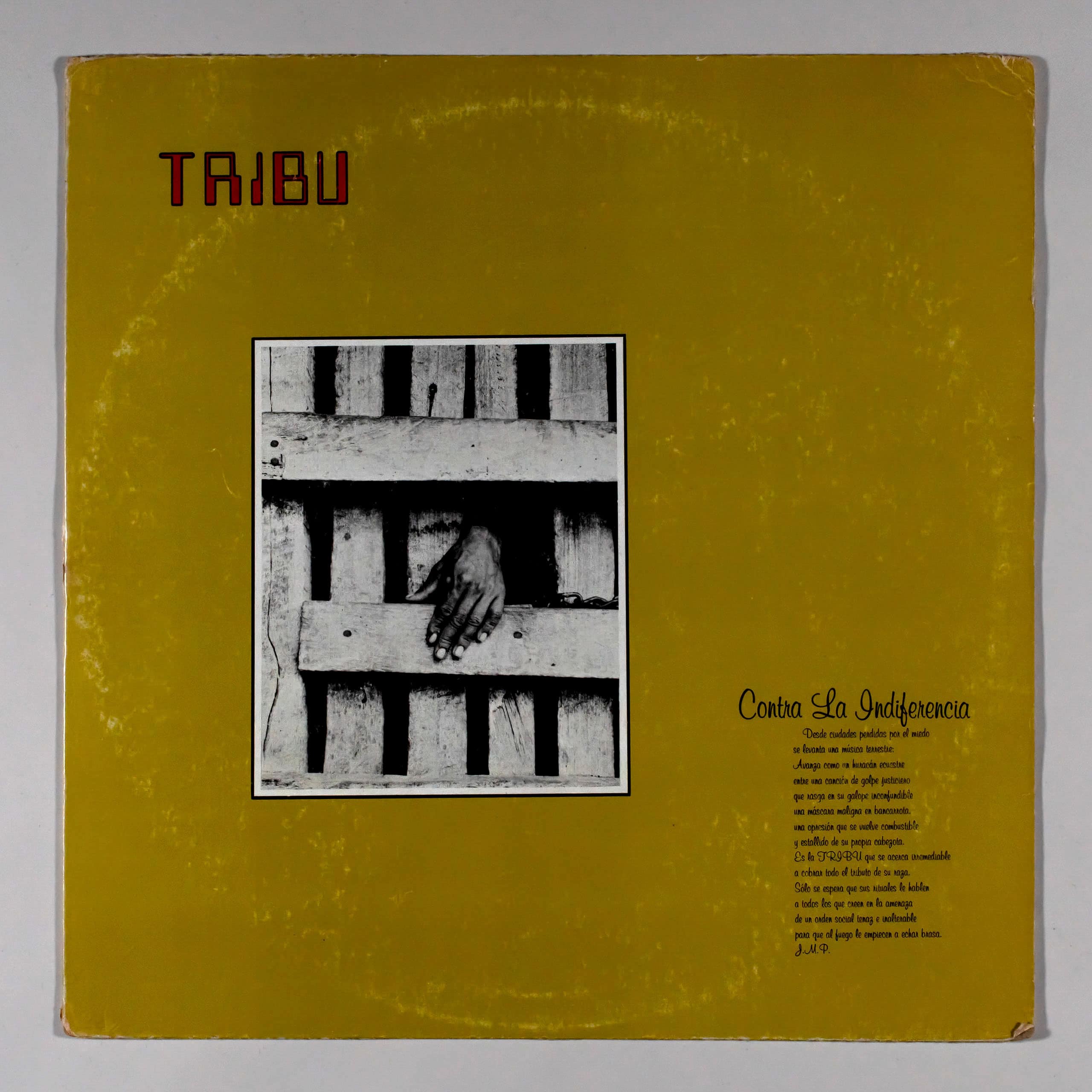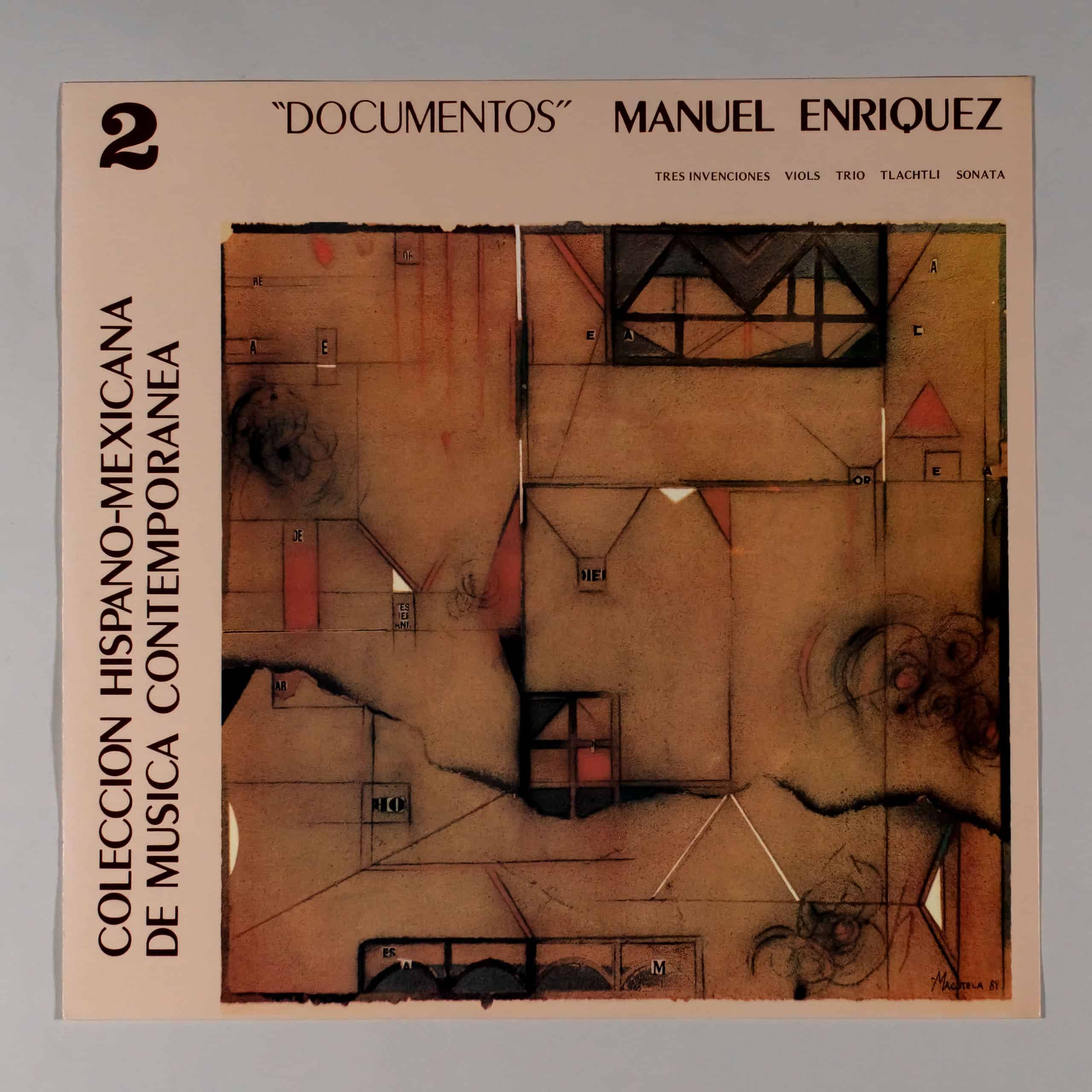
|
Format: Vinyl LP 12" 33 1/3 rpm Gatefold Released: 1984 |
Country: Mexico Genre: Classical Electronic |
Info:
HISPANIC-MEXICAN CONTEMPORARY MUSIC COLLECTION 2
“DOCUMENTS”
MANUEL ENRIQUEZ
TRES INVENCIONES VIOLS TRIO TLACHTLI SONATA
THREE INVENTIONS (1964)
Performers:
Jakob Glick – viola
Gerard Levy – flute
Recording made at the O. E. A. Pan-American Festival in Washington, on March 29, 1967.
VIOLS
Performer:
Manuel Enriquez
Tape made in March 1972 in the Columbia-Princeton laboratories in New York, where the only sound source is the violin itself, whose transformed and processed sounds have resulted in the stereo track that is the complementary factor of the piece. The original material has been previously written in a score that is fully graphic, that can be played on any stringed instrument, that when presented in this version, appears under the name “Móvil II” and that was composed in Madrid in October of 1969.
This performance was recorded at the RIVE studios in Madrid on June 13, 1976, the technical part being in charge of the composer Pablo Riviere.
TRIO
Performers:
Manuel Enríquez – violin
Robert Bardston – cello
Alcides Lanza – piano
Recording made in Montreal on January 19, 1983.
TLACHTLI
Performers:
Catherine Schieve –flute
Stacy Weage – clarinet
Alan Russell – violin
Renata Bratt – cello
Cindy Earnest – horn
Tom Mc. Colley – trombone
John Mc. Kay – piano
Jean Charles Francois – DIRECTOR
Grabación realizada en San Diego, Calif, el 17 de abril de 1982. Encargo del Ministerio de Asuntos Culturales de Francia para el FESTIVAL DE MONTPELLIER, Francia, 1978.
SONATA
Performers:
Hermilo Novelo – violin
Ma. Elena Barrientos – piano
Recording at the ORTF in Paris on January 14, 1969.
MANUEL ENRÍQUEZ was born in Ocotlán, Jal. He initially studied with his father, then with Ignacio Camarena and Miguel Bernal Jiménez; Later he was awarded a scholarship to the “Juilliard School of Music” in New York, having among his teachers Iván Galamian, Louis Persinger, William Primrose and Peter Mennin. At the same time he carried out private studies with Stefan Wolpe (disciple of Anton Webern).
In 1971 he was awarded a GUGGENHEIM scholarship to work at the Columbia Princeton Center for Electronic Music in New York and similar laboratories in Europe. He also attended the Darmstadt International Courses in Germany.
He has received commissions from numerous organizations, being the only Mexican who has obtained commissions for the Donaueschingen festival (1969) from the French Ministry of Culture (1978) and for the “Warsaw Autumn” (1978). Likewise, he has been invited by Federal Germany, Democratic Germany, Czechoslovakia, Soviet Union, Poland, Austria, Hungary, Finland, Sweden, Italy, Spain, Argentina, Brazil and other countries. From 1975 to 1978 he lived in Paris, commissioned by his government to spread Mexican music in Europe. In 1982, he was invited by the DAAD to reside in the city of Berlin, as a distinguished composer.
He received from the People’s Republic of Poland the decoration of Artistic Merit and, among other distinctions, he has been the object of “El Premio Jalisco”, the “José Clemente Orozco Medal”, the Prize of the Union of Theater and Music Chroniclers, the Experimental Film and the “Sourasky Award”, In 1983 he received the “National Award of Fine Arts” in Mexico.
Has been:
Member of the National Symphony Orchestra, of the Mexico Quartet, Concertmaster of the Guadalajara Symphony Orchestra, Founder of the Mexican Society of Contemporary Music and of the Latin American Society of New Music, Director of the National Conservatory of Music and Director of the INBA Music Department . He has also carried out activities in collaboration with Stockhausen, Ligeti, Globokar and Penderecki. He has been autographing the works of many composers.
He is a member of the Academy of Arts, is part of the National Council of the Mexican Culture Seminar and is currently Director of the “Carlos Chávez” National Center for Musical Research, Documentation and Information of the S.E.P. (CENIDIM). From there he has founded the International Forum of New Music, the Festival of Native Music and Dance, The Panorama of Viceroyalty Music in Latin America, the International Competition for Performers of Mexican Music and the Mexican Association of New Music, of which he is a member. President.
MANUEL ENRIQUEZ: DOCUMENTS AND CAREER
This is an album that is not only interesting because of the composer it presents, but also because of its documentary value. By titled it generically “DOCUMENTS”, the intention is to emphasize that value, and the album is given a unique and anthological dimension.
It is interesting to highlight this aspect here, since the work of Manuel Enríquez is known, appreciated, and widely interpreted in Mexico and Spain, in the United States, and in all European countries. We could even affirm that it is currently the cultured and new sound that most represents Mexico throughout the world.
The trajectory of Manuel Enríquez. It offers rigor, but what is most striking is that his language has become increasingly free. Who today could recognize, for example, the master Bernal Jiménez in the work of the disciple Enriquez? It would not be easy to recognize him, but he is there: he is knowledgeable, rigorous, knowing what not to do and what should be done; To say it with a simile: he is the painter who knows how to draw in a virtuoso and academic way, but who paints non-figurative paintings. In that painter the trade is noticeable, but it is not what he tries to highlight; what he is interested in highlighting is what he says and how he knows how to say it freely.
Enríquez’s musical training is also multiple, since from the first steps he took with his father, to the private studies he carried out with Stefan Wolpe (a disciple of Anton Webern), at the same time that he attended the “Juilliard School of Music” in New York, have provided him with a heritage without which I doubt he could have composed the fertile variety that he enjoys today.
But that’s not all in his training; I want to think that a good stage of his training is the one he attended as a music stand (30 years old), in different orchestras and chamber ensembles. I also want to think that, in the case of him as in that of other composers, the one who after being a performer becomes a composer, reveals an unusual attitude: creativity was absorbed by what he played. And what’s more, I still want to think that the fact that he continues to be an outstanding violinist today in the interpretation of his own works and those of others, basically responds to what I’m pointing out. Manuel also trained as a performer, to become a composer who is enthusiastic about performing, and who needs to see that others are enthusiastic when they perform.
You can write if you know how to read, and Enríquez knows how to read in all the musical languages that have been. His innovative contributions in the field of electroacoustics are one more example of his reading and writing wisdom.
And his language, I said, has become more and more free: freer because it has been experienced, not because it has been experimental. His works are inclusive.
In this album we attend a live music session, which includes works made from the mid-60s to the beginning of this decade. The recordings have been fully respected, and in them we find –as I also said at the beginning–, the document, the richness of the handwritten sound, just as it flows from interpreters that Manuel esteems, since he knows that they live the writing they read.
“DOCUMENTOS” is an important record due to the works, the performers –in Viols and Trio with Enríquez himself–; because it offers a minimal, but representative trajectory of his work; and for the recordings that, despite the coughs and for that very reason, we feel that we are in the place where music becomes unrepeatable: the auditorium. And, finally, it is important because, furthermore, this is the first album dedicated entirely to Manuel Enríquez, (We should add, thus, in parentheses, that the fact that it is Manuel’s first individual album is something we should celebrate, although what would proceed would be to lament, because at this stage of his work and recognition, he is barely the first. This is what happens in these payments).
ANGEL COSMOS
“DOCUMENTS” MANUEL ENRIQUEZ
Cover: “Composition No. 1 to Manuel Enríquez”, work by GABRIEL MACOTELA
Design and typography: ALBERTO AGUILERA
Back cover drawing: RAYMUNDO MARTÍNEZ
Interior labels: Improvisations by MANUEL MARÍN
Production manager: ANTONIO RUSSEK
Director of the collection: ÁNGEL COSMOS
Record No. 2 of the HISPANO-MEXICAN CONTEMPORARY MUSIC COLLECTION, published by the CIIM (Independent Center for Musical Research), of Mexico, D.F. Cuautla Street 84, Colonia Condesa.
Tel. 5-53-74-57.
The manufacture of this record was in charge of the Dept. of MUSART Special Products.
Printed by Impresora Exacta, S.A. de C.V.
New York No. 154, C.P. 03810, Mexico, D.F.
Telephones 536-53-53, 536-54-33 and 543-83-30.
Tracklist:
DOCUMENTS
SIDE 1
- A1 TLACHTLI (1982)
Performer(s): Catherine Schieve – flute, Stacy Weage – clarinet, Alan Russell – violin, Renata Bratt – cello, Cindy Earnest – horn, Tom Mc. Colley – trombone, John Mc. Kay – piano, Jean Charles Francois – conductor.
- A2 TRIO (1983)
Performer(s): Manuel Enríquez – violin, Robert Bardston – cello, Alcides Lanza – piano.
SIDE 2
- B1 VIOLS (1976)
Performer(s): Manuel Enriquez
- B2 SONATA (1969)
Performers: Hermilo Novelo – violin, Ma. Elena Barrientos – piano
- B3 TRES INVENCIONES (1964)
Performer(s): Jakob Glick – viola, Gerard Levy – flute.
Credits:
Cover: “Composition No. 1 to Manuel Enríquez”, work by GABRIEL MACOTELA
Design and typography: ALBERTO AGUILERA
Back cover drawing: RAYMUNDO MARTÍNEZ
Interior labels: Improvisations by MANUEL MARÍN
Production manager: ANTONIO RUSSEK
Director of the collection: ÁNGEL COSMOS
Notes:
Record No. 2 of the HISPANO-MEXICAN CONTEMPORARY MUSIC COLLECTION, published by the CIIM (Independent Center for Musical Research), of Mexico, D.F. Cuautla Street 84, Colonia Condesa.
The manufacture of this record was in charge of the Dept. of Special Products of MUSART.
Printed by Impresora Exacta, S.A. de C.V. New York No. 154, C.P. 03810, Mexico, D.F.
